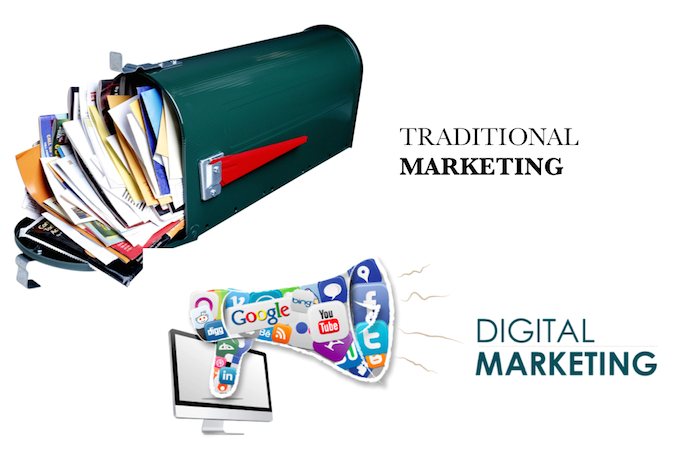Digital marketing v/s Traditional Marketing- Pros, Cons and a View from the Top!
Why traditional marketing is making a quiet exit
Before we can cut open this thing, let’s first examine the premise of this whole argument. We’ll begin with a definition of marketing and the basics of why it is such an important tool for businesses and people.
Theoretically speaking, marketing is a way of presenting of a brand to an end user, with an aim to sell the brand. Sounds easier said than done, isn’t it? Here’s where it gets a little rough-Marketing does not merely mean placing the product/ service in the market and waiting for the customer to waltz right in, on the contrary, it means defining the target customer and market, conducting a survey to understand the consumer and using tools and techniques to analyse his behaviour. This data would give you some solid conclusion about how the marketing pitch should be and how you should go about it.
A good marketing pitch fulfils the customers need precisely by providing what he wants, when he wants and wherever he wants it.
The premise of traditional marketing
Traditional marketing comprises of print ads in newspapers,periodicals and magazines, billboards, direct mail, business cards, posters, trade shows booths, TV and radio commercials and printed paraphernalia such as brochures or leaflets.
These were effective mediums until the advent of the internet and they are perhaps somewhat relevant even today, as a miniscule part of a brands marketing strategy. However, traditional marketing has had its run and is now perhaps approaching the last mile of the race.
Does this medium still work?
To fully appreciate how digital marketing has overpowered the traditional medium, lets look at it from a different angle; think of it this way, do you still carry the same cell phone you purchased 10 years ago? Or do you still drive the same vehicle that you had purchased aeons ago? Most likely not. Traditional marketing is somewhat similar to that outdated cell phone, namely it has a limited audience, it is static and there’s a time lapse in the communication. Not to mention it is expensive and manages to reach only a local audience.
The premise of Digital Marketing
Facebook, Twitter, YouTube, Google, LinkedIn and many other Social Medias have emerged as the transformational new digital marketing tool. What’s more, these media have seamlessly integrated into our everyday lives and it can be said that nearly all of us are connected all of the time. There’s a real time impact on the personal and professional lives and this has taken a whole new dimension for corporations establishing their brand presence on the digital stage.
Many organizations are in the process of scratching out traditional marketing and opting for complete digital advertising campaigns. To what result you may ask? Research statistics suggest that organisations that have opted out of traditional marketing fall somewhere in the bracket of 140-160%, whereas expenditure on digital marketing increased over 14%. And its not just advertising that is affected, the digital medium has intrinsically changed the way businesses work as well, for example, Newsweek, a well-known magazine brand has switched to a digital publication.
The challenges faced by a digital marketer today are evolving,dynamic and tangible in real time. Smart digital agencies fully utilize the given mediums, engage and interact with the customer with fresh, relevant content, calibrate campaigns if needed and do it at a fraction of the cost as compared to traditional marketing methods.
Keeping pace
Digital campaigns are increasingly becoming more and more targeted; most times it’s almost as if the messages were tailor-made for us. Not surprising, considering that data is measured and optimised for individual users. The trick is to understand the end users behaviour on individual platforms; a Facebook user is entirely different from the one on YouTube. Social media marketing campaigns cleverly engage and build audiences by becoming a part of the conversation. Trending news, pictures and anecdotes are shared immediately and go on to build a larger brand image. Needless to say its the final word in the marketing world today.









